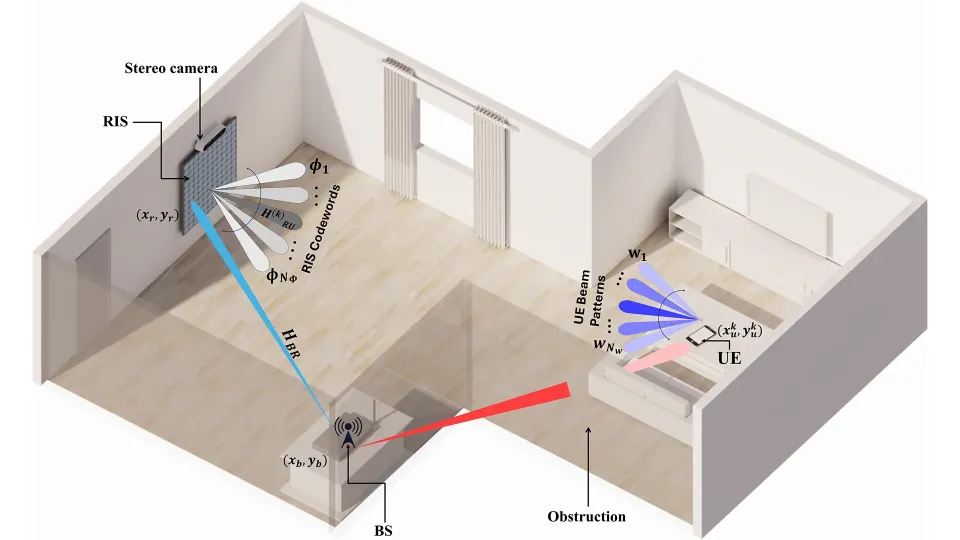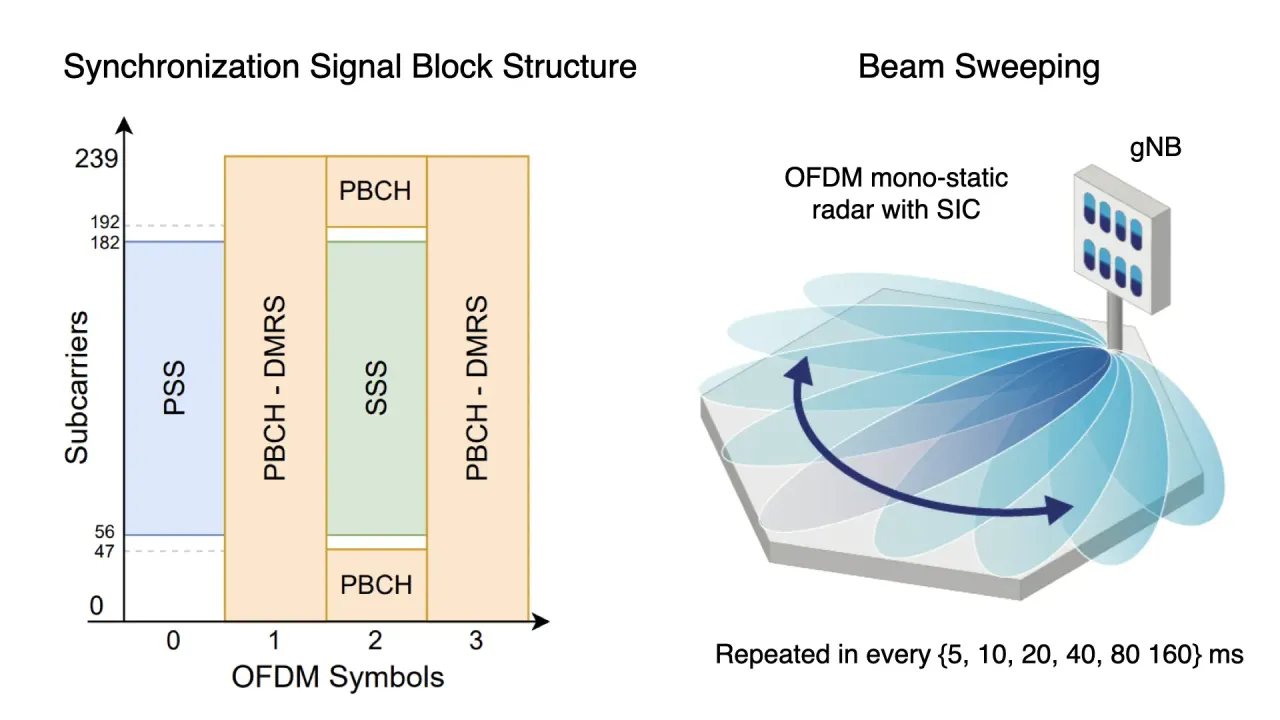
Multi-Target Detection and JVAR Estimation
Overview
Integrated sensing and communication has been a key element towards the advancements of next generation wireless communication systems. Moreover, the convergence of radar and communication systems is rapidly gaining momentum as we advance towards beyond fifth-generation (5G) networks. A promising approach involves the utilization of existing 5G new radio 5G-NR control signals for sensing purposes. This approach exploits the periodic nature of such signals to collect environmental data without degrading the communication performance. Synchronization signal block (SSB) is the most popular candidate for sensing, owing to its periodicity and beam sweeping nature. When beamforming is employed by the next generation node B (gNB), multiple SSBs are transmitted sequentially, with each corresponding to a distinct beam and direction. SSBs together form a single synchronization signal (SS) burst, after sweeping over the coverage area. Each SSB is composed of four elements: the primary synchronization signal (PSS), the secondary synchronization signal (SSS), the physical broadcast channel (PBCH) and its associated demodulation reference signal (DMRS).
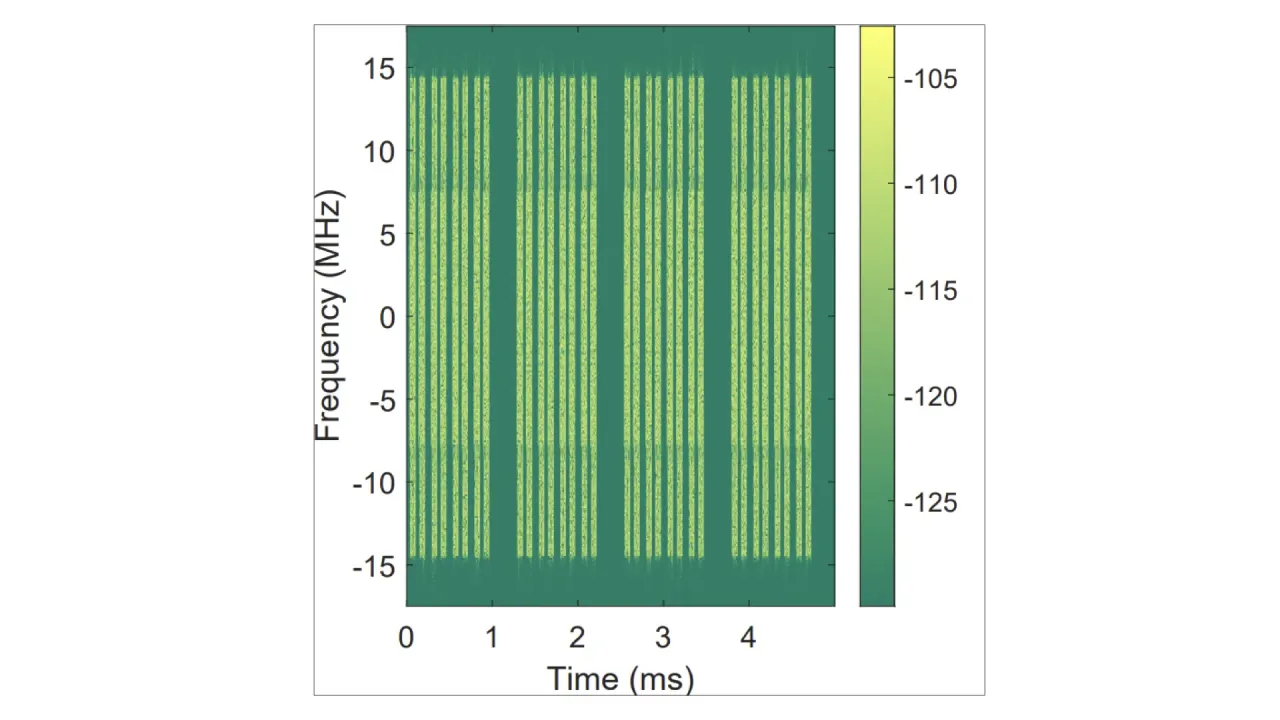
System Model
We consider an OFDM monostatic radar, where the radar processing aims to detect multiple targets around a multiple-input multiple-output (MIMO) gNB using samples of a 5G-NR SSB in the frequency-domain resource grid. The periodogram is the most common non-parametric approach for OFDM radar to generate range–velocity profiles.
The figure on the side shows an example with eight targets, illustrating the periodogram profiles of 64 SSBs in FR2, with the beam sweeping across an azimuth range from −60° to 60°. It is observed that the range–velocity profile suffers from elevated sidelobe levels resulting from the symbol gaps between SS blocks and from the fact that Doppler information for different targets appears in different blocks due to the SSB beam sweeping. In other words, the frequency information is not consistent across all OFDM symbols.
Therefore, we base our detection algorithm on the range–angle profile instead.
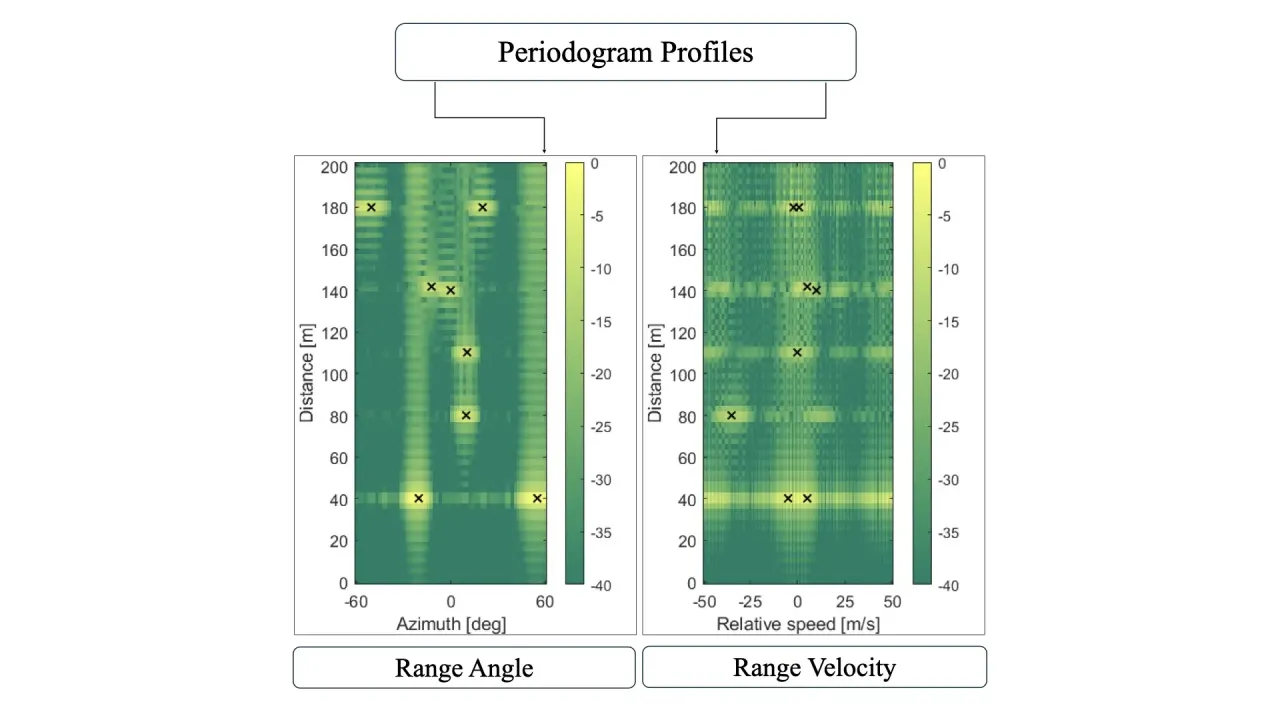
Detection and Estimation
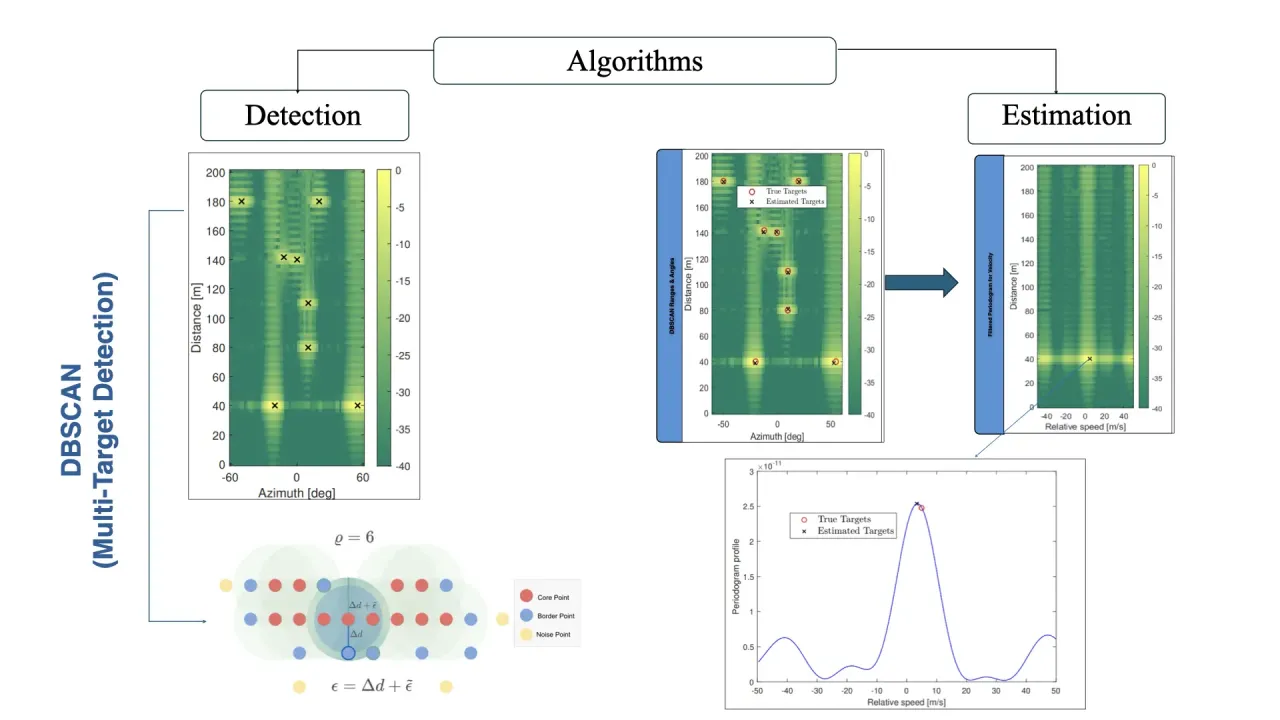
Results
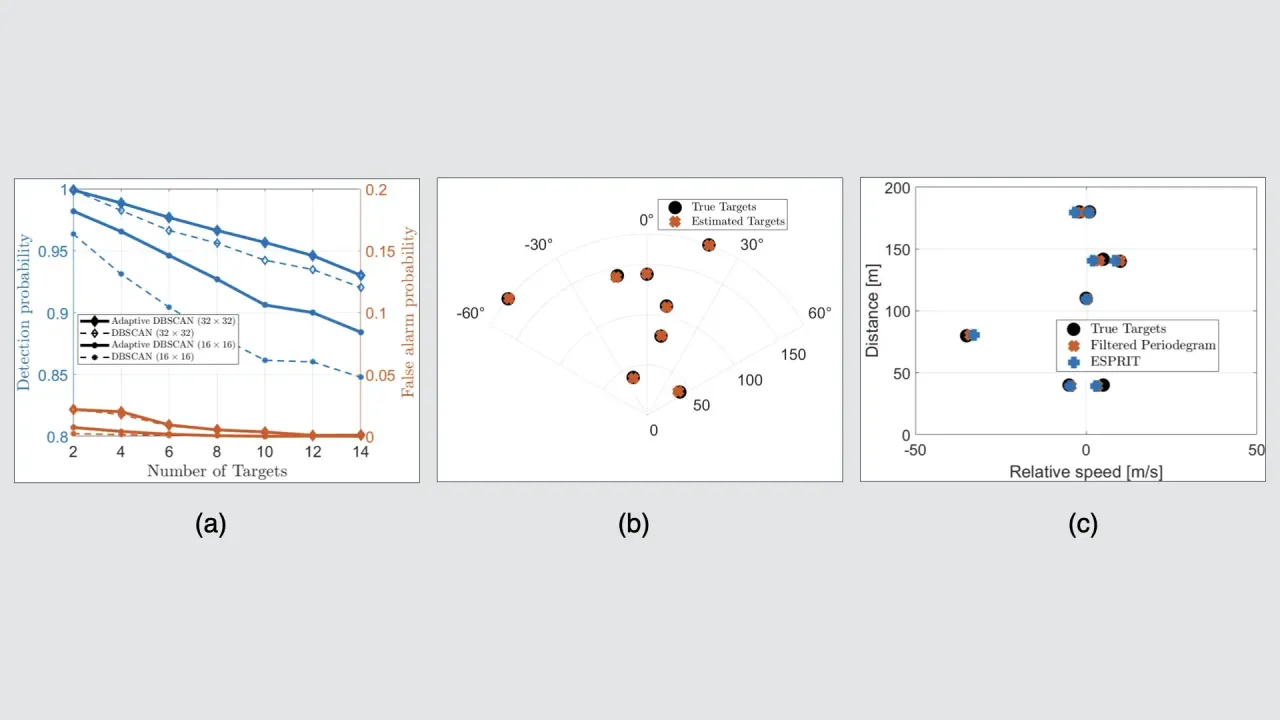
Copyright
The data and results presented in this work are protected by copyright and may only be used with proper citation. Any use of this work should reference the following papers:




